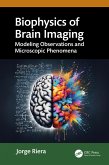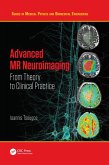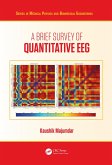Biophysics of Brain Imaging is broken up into 3 parts. Part 1: Modeling Observations and Microscopic Phenomena provides the physical and physiological foundation of all brain imaging modalities. Part 2 (Edited): Measuring and Modeling Emergent Mesoscopic Phenomena examines recording techniques and biophysical models used today to represent the mesoscale of the brain, the voxel. Part 3: Hypothesis Testing and Applications discusses methods to analyze brain imaging data and their applications to evaluate signatures in a variety of diseases, e.g., epilepsy, AD, and migraine.
This book is intended for undergraduate and graduate level students in Computational Neuroscience, Medical Imaging, Electrophysiology, and Brain Data Analysis and Modeling courses.
Figure slides are available to adopting professors.
Dieser Download kann aus rechtlichen Gründen nur mit Rechnungsadresse in A, B, BG, CY, CZ, D, DK, EW, E, FIN, F, GR, HR, H, IRL, I, LT, L, LR, M, NL, PL, P, R, S, SLO, SK ausgeliefert werden.









